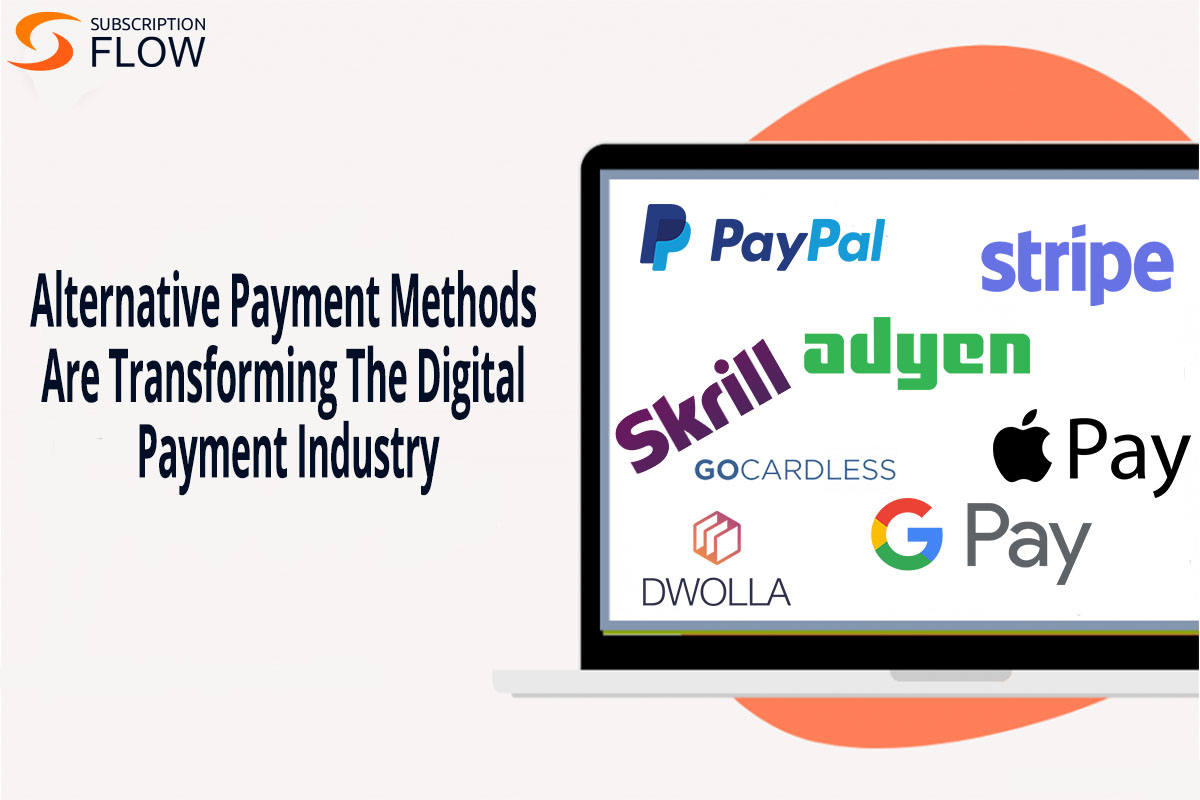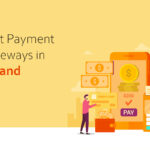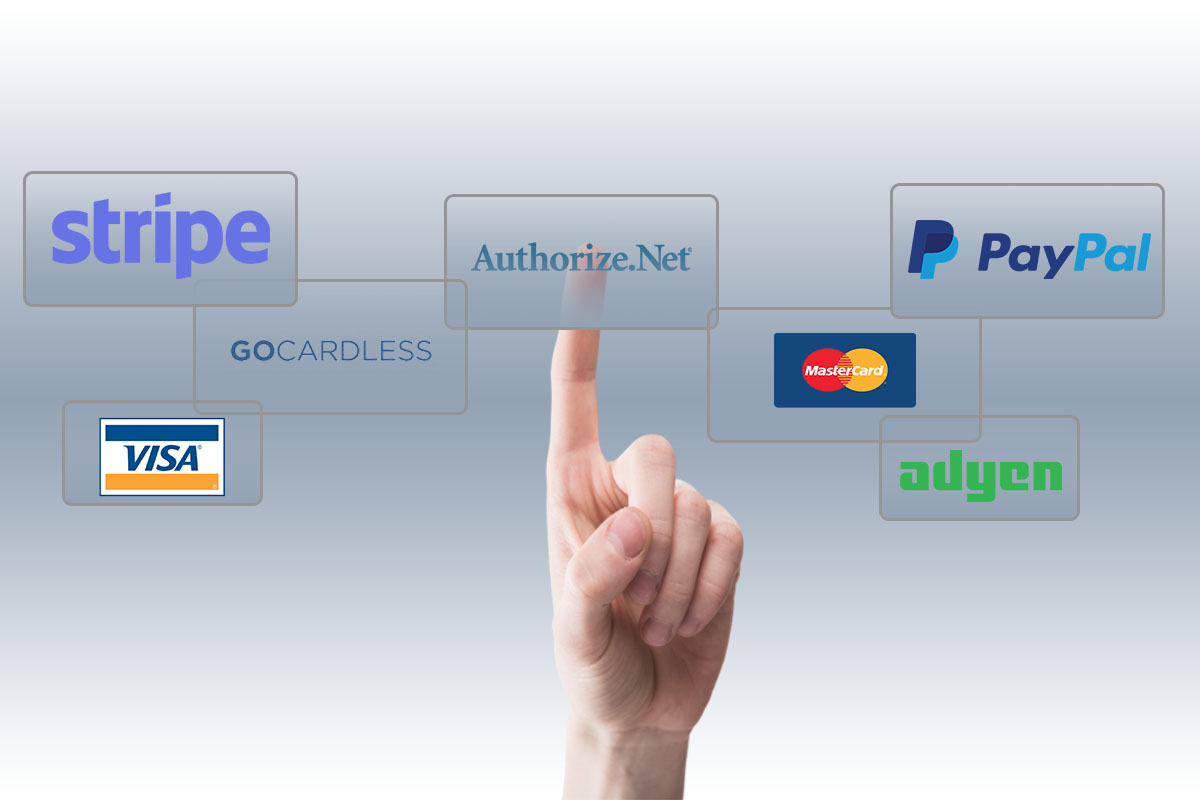
Alternative Payment Methods—A New-Age of Electronic Funds Transfer
It took ages to move to the payment system from the barter system to the currency exchange. The advent of the internet changed everything.
Technological advancement has transformed paper-based currency into plastic. Cash and check payments in two to three decades only, to a great extent, have been replaced by electronic funds transfer from one bank account to another account.
But, the introduction of digital wallets has transformed the way we think about funds transfer. It was an invention that even has revived the digital payment industry.
Today, moving money across the banks from out of the network of banks through these alternative payment methods is a reality. Not only, it is easy, simple, and available 24/7/365, it is also safe, legal, and instant.
Individuals and businesses are frequently using these payment methods to get paid faster and have condensed all their payment operations, documentation, and other hassles into an application that can easily be accessed via any portable or non-portable device.
With uses far and wide, alternative payment methods are an indispensable chunk of how money moves through the economy and our lives.
This article briefs our readers about the alternative payment method and its types, importance, and advantages. We will also walk you through some of the most common alternative payment methods.
Also Read: What Are the Online Payment Methods for Automated Recurring Payment Processing and How Do They Work?
What is an Alternative Payment Method?
Alternative Payment Methods or APMs are the forms of digital payment methods used to pay for goods or services that are anything but cash or credit card (including VISA, Mastercard, AmericanExpress, Discover, UnionPay International, or any other) issued by a bank.
Some of the common examples of these APMs around us include prepaid cards, mobile payments, e-wallets, bank transfers, instant financing, bank orders, cryptocurrencies, etc.
Different Types of Alternative Payment Methods
Without knowing, we all are using different types of alternative payment methods to make payments for our bills, instant funds transfer to friends and family, salary transfer, online purchases, and more. In the last few years, the popularity of the APMs has skyrocketed.
Let’s quickly learn about the major APMs that are used by individuals, businesses, governments, and even corporations to make electronic payments.
Alternative Payment Methods Associated with Banks
Some of the most common alternative payment methods that involve banking networks are:
- Online Banking
It is the type of APM when the customer is not required to enter the credit card information to make online payments from a bank account to another bank account or non-bank entity.
- Bank Transfers
It is popularly called wire transfer. It is the direct transfer of money from an account holder’s bank account to an individual’s or a business’s bank account.
- Direct Debit
It is a pre-authorized way of transferring money from one bank account to another bank account or non-bank account. It is considered an ideal, safer, and favorable method for recurring payments that require to pre-inform the account holders about the upcoming transaction.
Alternative Payment Methods Not Associated with Banks
The electronic funds can be transferred from the accounts and in between the accounts that exist outside of the banking network. Some of the most used of them are:
- Digital Wallets
Digital wallets are also called e-wallets. These are used to transfer funds from the e-wallets to bank accounts and other APMs. These are all prepaid accounts that can also store payment information, payment history, and can automatically generate receipt of funds exchange in real-time. Some are even available to manage currency conversions.
Popular examples of these digital wallets are PayPal, Venmo, Braintree, Dwolla, Due, Stripe, Payoneer, Authorize.Net, Adyen, and others.
- Mobile Payments
As the name suggests, these are the payments made using mobile phones through mobile e-wallets. Mobile Payments are definitely one of the most popular ways to make frequent, small, and instant transactions. These include ApplePay, AndroidPay, GooglePay, AliPay, WallmartPay, and many more.
- Crypto Wallets
Crypto wallets are used to make payments via cryptocurrencies.
Cryptocurrency is a digital currency. The most popular cryptocurrencies are Bitcoin, Bitcoin Cash, Litecoin, Ethereum, Binance Coin, Tron, and Chainlink.
Crypto wallets are used to store the keys for these digital currencies. The popular ones used for Bitcoin include Coinbase, Trezor, Ledger, SoFi, Robinhood, Edge, and Exodus.
Some digital wallets also facilitate electronic payments made via cryptocurrencies.
The Rise of Alternative Payment Methods
The evolution of the digital payment system dates back to the end of the twentieth century which escalated to its peak with the outbreak of the coronavirus pandemic and the proliferation of the IT and Finance industry and eCommerce economy.
The digital payments landscape came into existence when by the end of 1997, a young entrepreneur sold a CD over the internet through his credit card payment. Later, Coca-Cola company installed vending machines that could accept payments through text messages.
Yesteryears enthusiastic entrepreneurs and today’s tech giant Elon Musk and Capitalist Peter Thiel in 1999 laid the foundation of alternative payment methods with the introduction of the first-ever, digital money transfer service by the name of PayPal.
In 2003, Chinabank introduced one of the most contributing elements in the growth of eCommerce, AliPay. The first mobile payment system was created by M-PESA in 2007.
The advent of cryptocurrency revamped the digital payment landscape when by the end of 2009, Bitcoin was launched and introduced secure and untraceable payments using a decentralized payment system.
By the end of 2010, Stripe, Square, and some of today’s leading digital payment service providers were introduced.
The journey of alternative payment methods began with the arrival of WeChat Pay in 2013, ApplePay in 2014, and is continued to grow with GooglePay, Amazon Pay, non-banking merchants accounts, digital wallets, mobile wallets, crypto wallets, and more.
Alternative Payment Methods Are Transforming The Digital Payments Industry
Today, the digital payment volume has already surpassed the $4.1 trillion mark and is expected to grow manifold by the end of 2025.
Internet, tech-savvy youth, and the evolution of eCommerce, IT infrastructure, Subscription Commerce, and mobile and finance technology.
According to the market and the market’s Global Forecast Report for 2025, the pandemic has accelerated the adoption of contactless and wallet payments. Digital wallets and mobile payments are witnessing increased traction for Peer to Peer (P2P) transfers, bill payments, and Customer to Business (C2B) payments for essential services owing to the lockdown and aversion to the exchange of cash.
The report further states that the global digital payment market size is expected to grow from USD 79.3 billion in 2020 to USD 154.1 billion by 2025.
The digital payment market is expected to grow, owing to the worldwide initiatives and post-COVID commerce and industry business measures for the promotion of digital payments, high proliferation of smartphones, increase in eCommerce sales, the rise of subscription commerce, and growth in internet penetration.
Popular Alternative Payment Method Options
Hundreds of APMs are here to make electronic payments easy, faster, and simple. Here are our top picks to make payments through alternative payment methods using the following options:
- PayPal
PayPal is the leading player in the digital payment industry. It has more than 137 million active registered users and more than 30 million US mobile customers.
PayPal is available in more than 190 countries and supports 23 currencies.
PayPal is also the leading omnichannel payment processing services provider. It allows users to quickly create an account and start sending and receiving money into their digital wallets.
It charges 2.9% plus $0.30 per transaction.
- Adyen
Adyen is one of the tech-friendly online alternative payment methods, especially for customers based in the United Kingdom, the European Union, the United States, and Canada.
It is also an omnichannel payment processing services provider that is ideal for businesses with a higher volume of transactions as it is equipped with highly advanced risk management tools. It ensures the encryption of sensitive data, offers built-in currency conversion, and on its basis charges a processing fee plus a payment method fee per transaction.
- GoCardless
GoCardless is also a digital payment service used to accept recurring payments through GoCardless. It is a paid system that offers multiple plans for the transactions as per the needs.
GoCardless also enables subscription and SaaS service providers to accept recurring payments in the form of direct debits.
GoCardless is an ideal payment services provider that can work with a range of networks of financial institutions that process payments directly from one bank account to another across the United States, Canada, Australia, the United Kingdom, the European Union, and others.
- ApplePay
Apple Pay is a mobile payment e-wallet service by Apple. ApplePay allows its users to make payments in iOS apps and on the web using the Apple browser, Safari. It is supported on the iPhone, Apple Watch, iPad, and Mac.
- GooglePay
Google Wallet is also a free mobile wallet that can store payment details, history, receipts, orders, and more. It is used by hundreds of merchants across the world to provide an engaging customer experience at checkouts. Google Wallet can also be linked to Google sign-in to make registration to the merchant site easy and instant. It facilitates Android users with tap-to-pay purchases on mobile devices, enabling users to make payments with Android phones, tablets, or watches.
- Skrill
Skrill is also an alternative payment wallet that is popular for making cross-border payments. Individuals and businesses,, can use the Skrill e-wallet to pay and receive payments from anywhere anytime.
Skrill is affordable and accessible in terms of transaction charges. Its basic version is free and charges only a fixed percentage per transaction.
- Dwolla
Dwolla allows businesses to make digital payments through its payment network
Dwolla is a payment network that allows any business or person to send, request, and accept money, without relying on credit cards. Dwolla connects to a bank account and allows you to move money at a very low rate. Easily create a “Pay With Dwolla” button on your website. Price: $0.25 per transaction, or free for transactions $10 or less.
- Exodus
Exodus is a crypto wallet for mobile and desktop. It has a simple interface and built-in exchange with the ability to swap Bitcoin with other cryptocurrencies.
Exodus currently allows for swaps between over 100 different cryptocurrencies.
Conclusion
With this transforming technology and array of payment options, set your business up for subscription success by offering multiple alternative payment methods. Our subscription management platform, SubscriptionFlow, offers many safe, fast, and extensive payment processing solutions through integration with payment gateways. This enhances a customer’s buying experience by adding flexibility, which can be used to optimize conversion rates.
To learn more about how your business can offer alternate payment methods to improve the checkout process, schedule a demo to speak with SubscriptionFlow’s team of experts.











